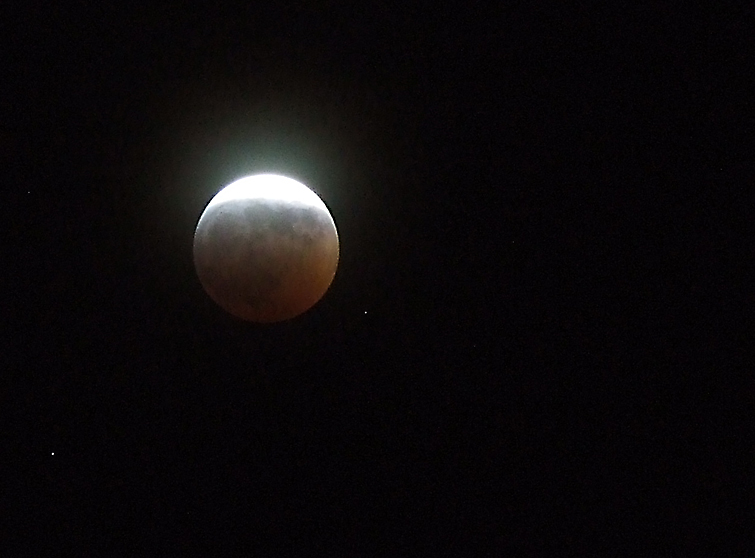Last Full Lunar Eclipse Until 2010 Is Tonight
By Connect Mason News Director Elizabeth Stern
Image of a partial lunar eclipse courtesy of Flickr's "seeks2dream" and Creative Commons.
 The last full lunar eclipse until Dec. 20, 2010 will occur tonight, Feb. 20.
The last full lunar eclipse until Dec. 20, 2010 will occur tonight, Feb. 20.
- See photos from the eclipse courtesy of Mason Blogger, Isaac Pacheco
Beginning at 8:43 p.m. EST, a partial eclipse will take place. Shortly after 10 p.m., the moon will be completely in Earth’s shadow until 10:51 p.m. The eclipse will end at approximately midnight.
This will mark the third lunar eclipse in the last year and will also feature appearances of Saturn, whose rings will be viewable with the aid of a telescope, as well as Mars and the star Regulus.
Tonight’s eclipse will provide optimal viewing conditions of Saturn, as Saturn’s rings will tilt with the edges facing Earth and appear to be almost invisible by Sept., 2009.
In a total lunar eclipse, the full moon intersects with Earth’s shadow, blocking sun rays which usually illuminate the moon. Sunlight can still reach the moon’s surface indirectly through Earth’s atmosphere.
Because Earth’s atmosphere filters out blue light, the moon may appear red or orange, depending on atmospheric conditions. Turquoise coloring around the moon’s edges may appear towards the beginning and end of the eclipse.
From the hours of 7 p.m. to 1 a.m., partially cloudy skies are forecasted for Fairfax, Va.
The next partial lunar eclipse will take place in August, in addition to a full solar eclipse.
GMU Observation Tonight
For information about tonight’s eclipse and availability to view the eclipse from the GMU Observatory located in Research I, contact Dr. Harold Geller.
Updated by Whitney Rhodes at 11:37 p.m.
